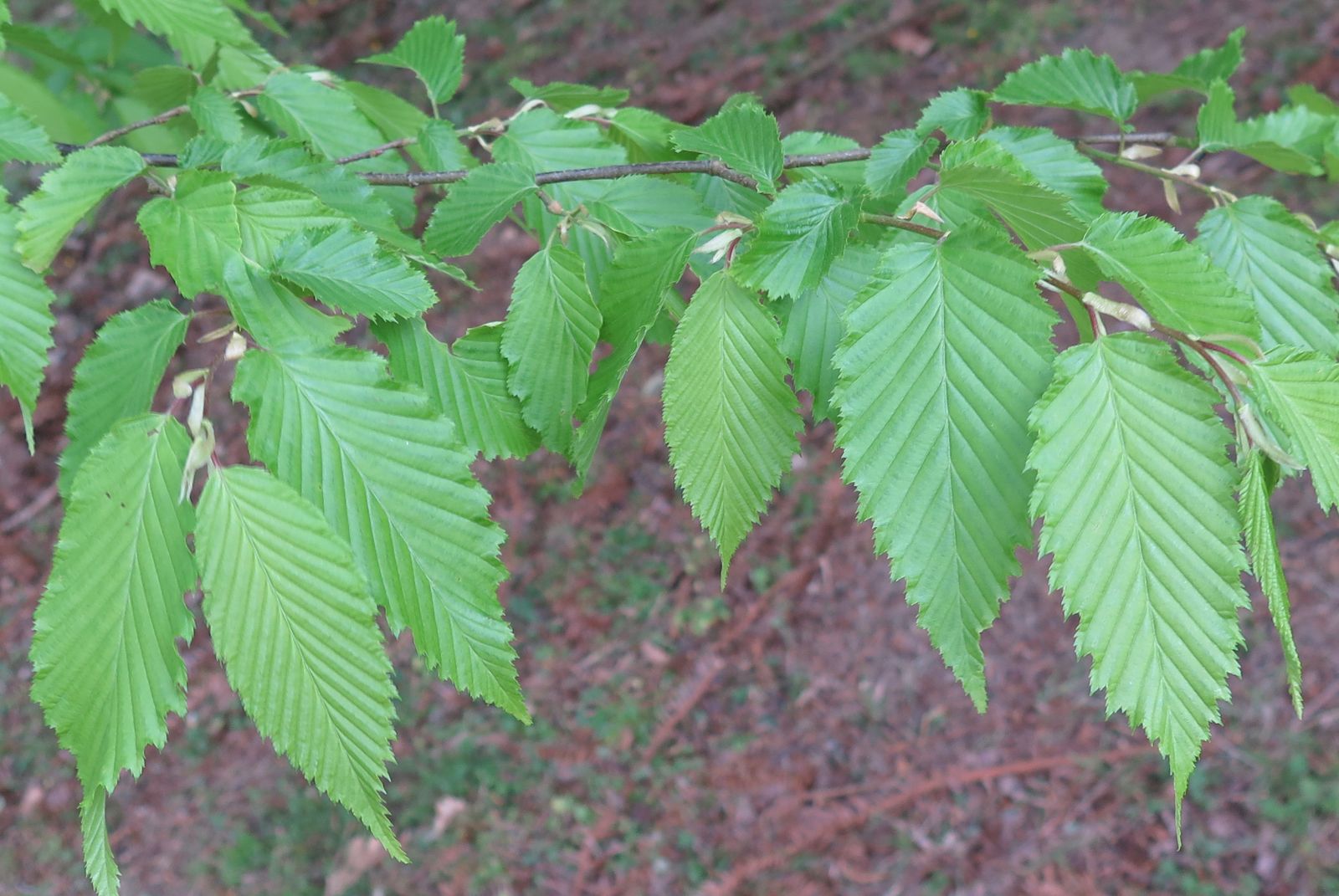Carpinus shensiensis
Sponsor
Kindly sponsored by
Lord and Lady Aldington
Credits
Owen Johnson (2022)
Recommended citation
Johnson, O. (2022), 'Carpinus shensiensis' from the website Trees and Shrubs Online (treesandshrubsonline.
Genus
Synonyms
- Carpinus shensiensis var. paucinerva S.C. Qu & K.Y. Wang
Other taxa in genus
- Carpinus betulus
- Carpinus caroliniana
- Carpinus cordata
- Carpinus faginea
- Carpinus fangiana
- Carpinus fargesiana
- Carpinus hebestroma
- Carpinus henryana
- Carpinus japonica
- Carpinus kawakamii
- Carpinus laxiflora
- Carpinus londoniana
- Carpinus mollicoma
- Carpinus monbeigiana
- Carpinus omeiensis
- Carpinus orientalis
- Carpinus polyneura
- Carpinus pubescens
- Carpinus rankanensis
- Carpinus × schuschaensis
- Carpinus tropicalis
- Carpinus tschonoskii
- Carpinus turczaninovii
- Carpinus viminea
Tree to 15 m. Bark dark grey, finely roughened. Twigs purplish brown, densely pubescent when young and with the hairs persisting near the buds. Leaves oblong to obovate, 6–9 × 3–4.5 cm; apex short, often shouldered; upper surface glabrous; lower surface sparsely pubescent along veins and with tufts in vein axils; lateral veins in 14–16 parallel pairs; margins regularly but minutely double-serrate, usually with just 1 or 2 secondary teeth; petiole densely pubescent, 7–17 mm. Fruiting catkins 7–9 cm long, the peduncle 1–3 cm long and densely pubescent, with longer hairs mixed in; fruit-bract D-shaped, 2.5–3 cm long, the curved side irregularly dentate, the straight side entire but with an inflexed auricle at the base, with 4 or 5 pubescent veins. Nutlet glabrous except at the tip, with sparse brown resin-glands and prominent ribs. (Li & Skvortsov 1999; Rushforth 1985; De Langhe 2022).
Distribution China S Gansu, S Shaanxi (Nanwutai)
Habitat Temperate forests, 800–1000 m asl.
USDA Hardiness Zone 6
RHS Hardiness Rating H6
Conservation status Least concern (LC)
This is one member of a considerable group of Asian hornbeams which recent phylogenetic analyses suggest are very closely related (Dong et al. 2022), and for which Carpinus turczanonivii is the earliest published name. Like many of these sub-populations, C. shensiensis is restricted to a rather small mountainous area of China, but does not seem to be rare in the wild (Shaw et al. 2014); it is one of a great number of local populations to have been described as new species by the Chinese botanist Xiansu Hu in the mid 20th century. Among its close allies, it is an unusually pubescent tree, and the double serration of its leaves is particularly close and quite regular. These leaves flush reddish in spring (Pan-Global Plants 2022).
This hornbeam seems to have been introduced to the west in 1982 by Roy Lancaster, through his contacts with the Shanghai Botanical Garden and from the Qin Ling Shan in southern Shaanxi (Grimshaw & Bayton 2009; Clarke 1988). Keith Rushforth has however suggested that at least one plant from this collection, with denser pubescence and larger fruit-bracts, may better fit within Carpinus kweichowensis Hu, a tall-growing tree described from warmer forests in the Zhenfeng Xian of south-west Guizhou and from south-eastern Yunnan, which is now assessed as Near Threatened (Rushforth 1985; Li & Skvortsov 1999; Shaw et al. 2014).
Whatever their origin, these trees have grown well in the UK; one at Beaufort Lodge in Hampshire, on a chalky soil, was 8 m × 27 cm dbh in 2009 (Tree Register 2022). This has been outgrown by a quartet of younger examples in the kindly conditions of Tregrehan in Cornwall (QPH 550, planted in 1999) which were up to 12 m tall by 2014 (Tree Register 2022). The representative in the National Collection at the Beale Arboretum on the northern outskirts of London, planted in 1998 and also 12 m tall in 2019, looks suspiciously like C. betulus (Tree Register 2022). A 1992 planting at Bute Park in Cardiff, a public collection on a heavy somewhat alkaline soil, was only a 3 m bush by 2005, and one of the original introductions has grown equally slowly in the chilly conditions of Dawyck Botanic Garden in the Scottish Borders (Tree Register 2022).
This tree’s ultimate hardiness has probably not yet been tested; it is successfully cultivated in the University Botanical Gardens at Strasbourg (Gardenbreizh.org 2022). Like most Asiatic hornbeams, Carpinus shensiensis is available from several specialist nurseries in the UK (Royal Horticultural Society 2022). In North America, two trees were planted as C. shensiensis in 1991 at the University of British Columbia, Canada (J. Sutton pers. comm.).


